It’s the world’s largest LED screen, offering nearly 580,000 square feet of artistic freedom.
Each of Sphere’s diodes can display more than a billion colors, and there are 48 of those diodes in each of the approximately 1.2 million LED pucks that blanket its exterior.
Yet for all of its bells and whistles, every state-of-the-art this and never-been-done-before that, the most popular piece of content to have graced the Exosphere resembles something that could’ve been texted on a BlackBerry.
He/she/it/they or however the smiling, yellow Emoji identifies — Sphere executives aren’t saying — has become the giant public face of the $2.3 billion venue.
When Sphere was named to The New York Times’ 71 Most Stylish “People” of 2023, sandwiched between Utah ski crash trial defendant Gwyneth Paltrow and “The Traitors” host Alan Cumming, it was Emoji in the photo.
Guy Barnett, who oversaw Sphere’s brand strategy and creative development before recently transitioning into a consulting role, declares it one of the venue’s “smash-hit successes.”
And he knows a little something about pop culture icons. During his previous career in advertising, Barnett was the driving force behind a new spokesman who helped NBC promote its acquisition of Premier League soccer. The character’s name? Ted Lasso.
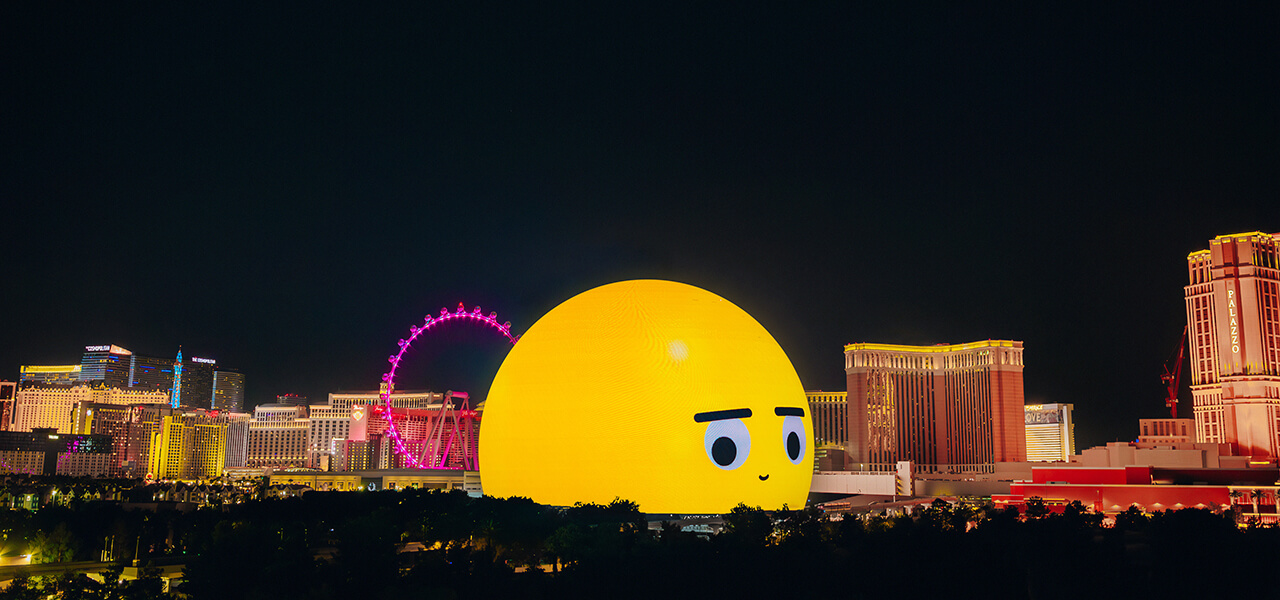
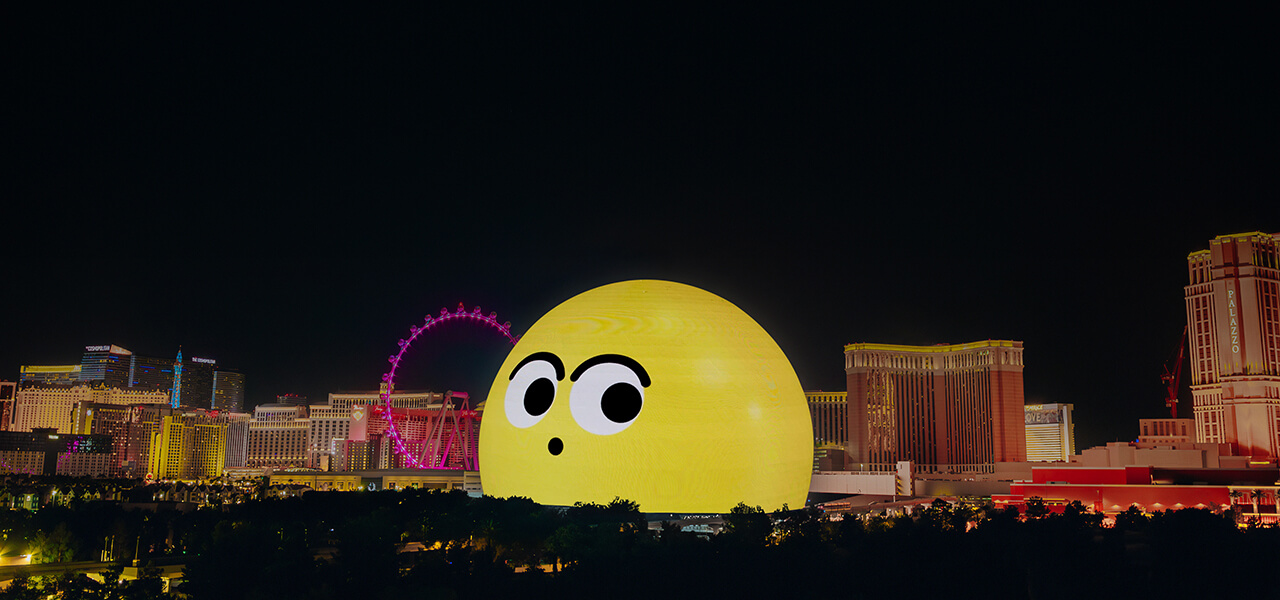
In the beginning, Emoji mostly looked around, assessing its surroundings with a childlike curiosity while seemingly interacting with people on the ground, in hotel rooms and in airplanes. (Sphere Entertainment)
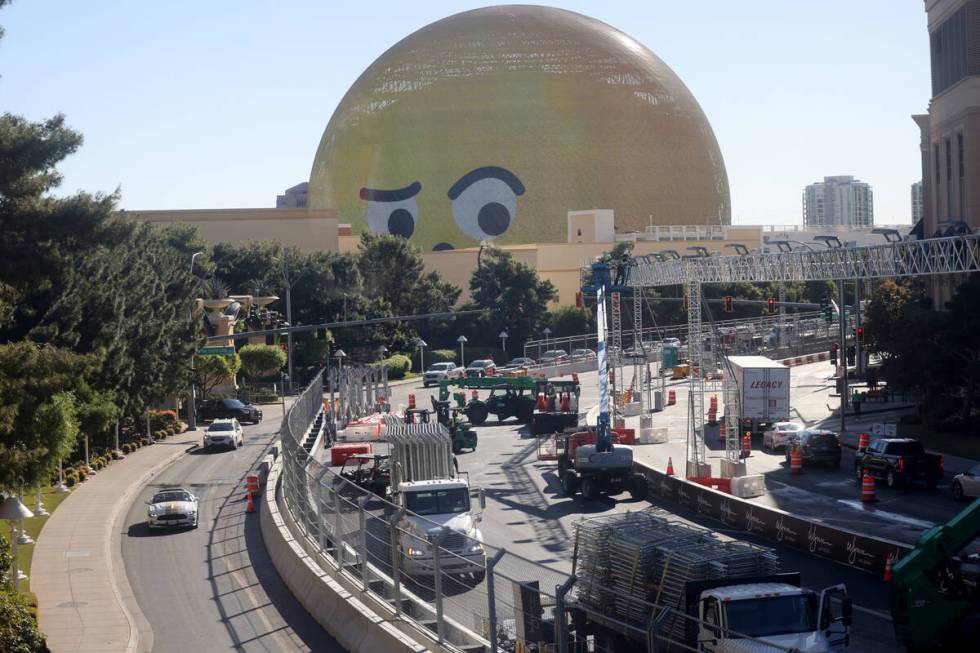
‘This is going to freak people out’
Last Fourth of July, when the Exosphere was illuminated for the first time and the world gazed upon it in slack-jawed wonderment, Barnett noticed something was missing.
“I think what we found, once we were in that landscape and we turned it on, is that there can be a lot more playfulness, a lot more connectivity with an audience that’s on the ground,” Barnett says. “A lot more fun can be had.”
One of Sphere’s early breakout hits was the realistic eyeball that kept watch over the city.
“There was a moment,” Barnett says, “where we thought, ‘This is going to freak people out.’ ” (Side note: It did.) “But then you also see it as a Salvador Dali homage once it’s in the cityscape. You see these artistic things that you can start to play around with. You can start to imagine different things.”
From those two realizations came Emoji. (There’s an internal name for the character, but Barnett says it can’t be revealed until it’s been fully trademarked.)
In the beginning, Emoji mostly looked around, assessing its surroundings with a childlike curiosity while seemingly interacting with people on the ground, in hotel rooms and in airplanes. Sometimes it slept, with cartoonish “Z’s” floating about. Every so often, through a process Barnett refers to as “planned serendipity,” Emoji would look directly at the monorail traveling beneath it.
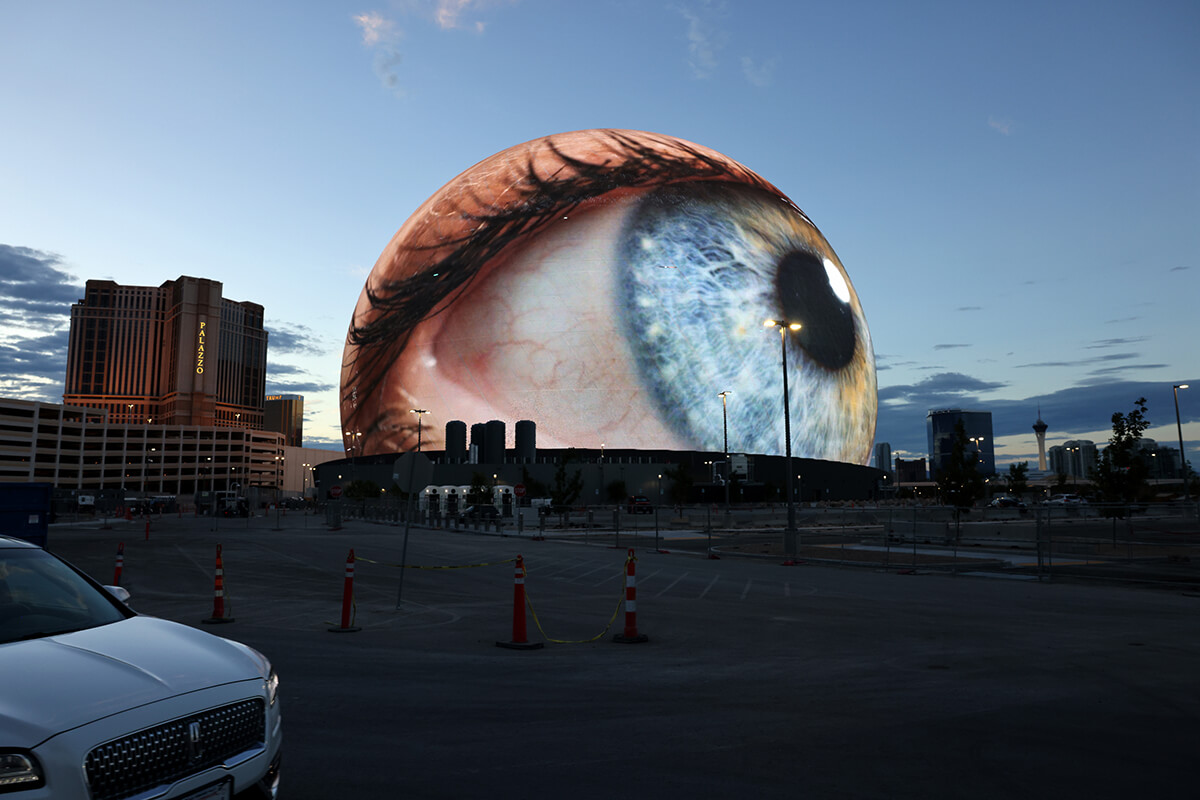
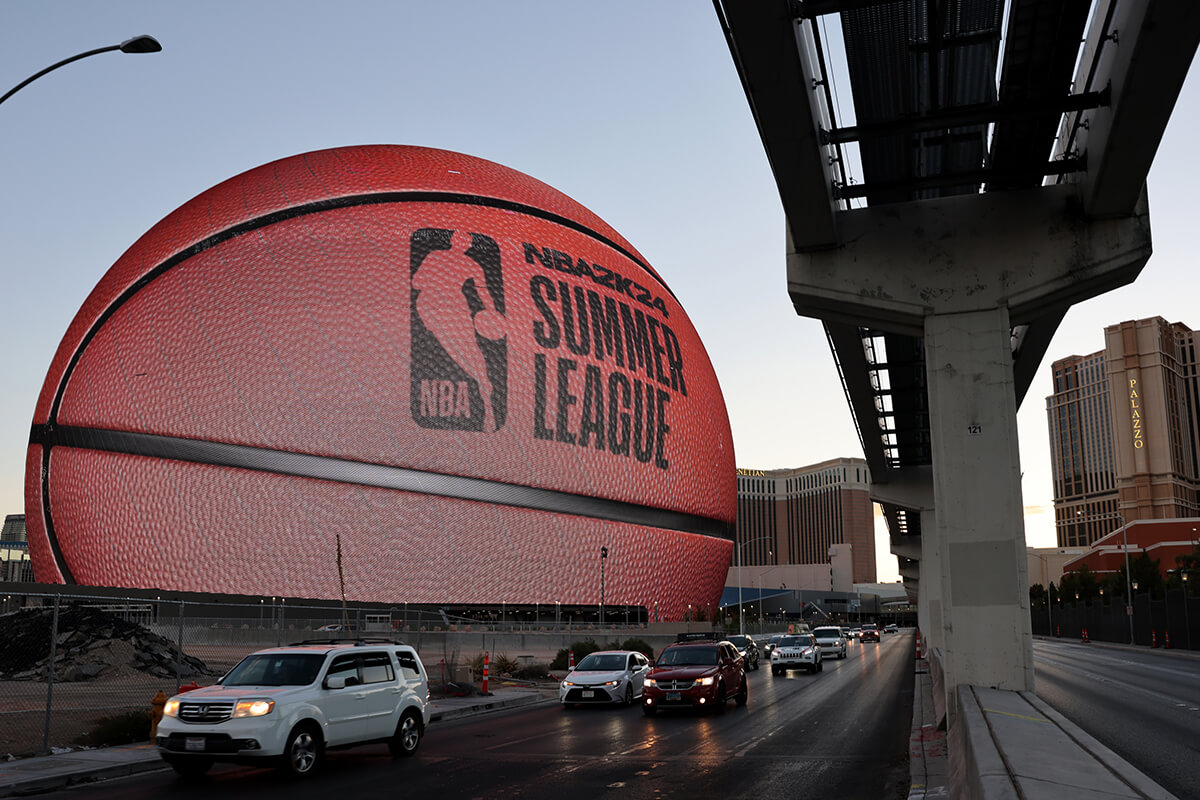
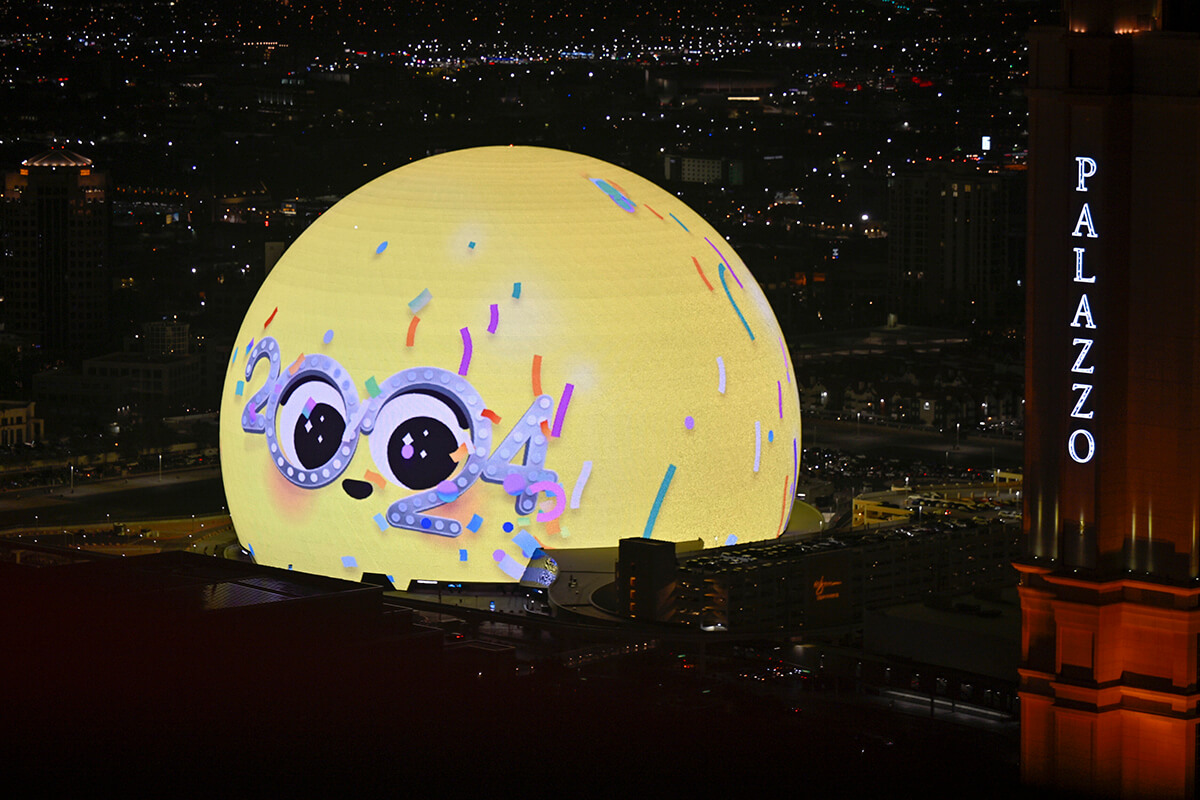
Everything changed, though, on Oct. 9, when Canadian golf content creator Joseph Demare, who goes by the nickname Joey Cold Cuts, posted a video from his round at Wynn Golf Club. Lined up in front of Sphere, Demare’s tee shot was perfectly timed so that it appeared Emoji watched it take flight before looking down in disgust. “You know you suck,” Demare wrote in the caption, “when even the @spherevegas is trolling you after your tee shot.” It wasn’t long before the video was everywhere, appearing on social media feeds and local newscasts.
“We started to think, ‘We now have a character that brings emotion and brings playfulness to the Sphere,’ ” Barnett says, “which we just started to enjoy more and more.”
For its first New Year’s Eve, Emoji wore novelty 2024 glasses and unfurled a party horn while confetti rained down on its face.
And forget driver Max Verstappen and his near-constant bashing of the city as though he were an old-school wrestling heel. Emoji, wearing a Formula One helmet, was the real star of the Las Vegas Grand Prix. With the course taking drivers around Sphere during turns five through nine, Barnett and his team timed how fast the cars would be going at those points so they could have Emoji appear to follow them with its eyes.
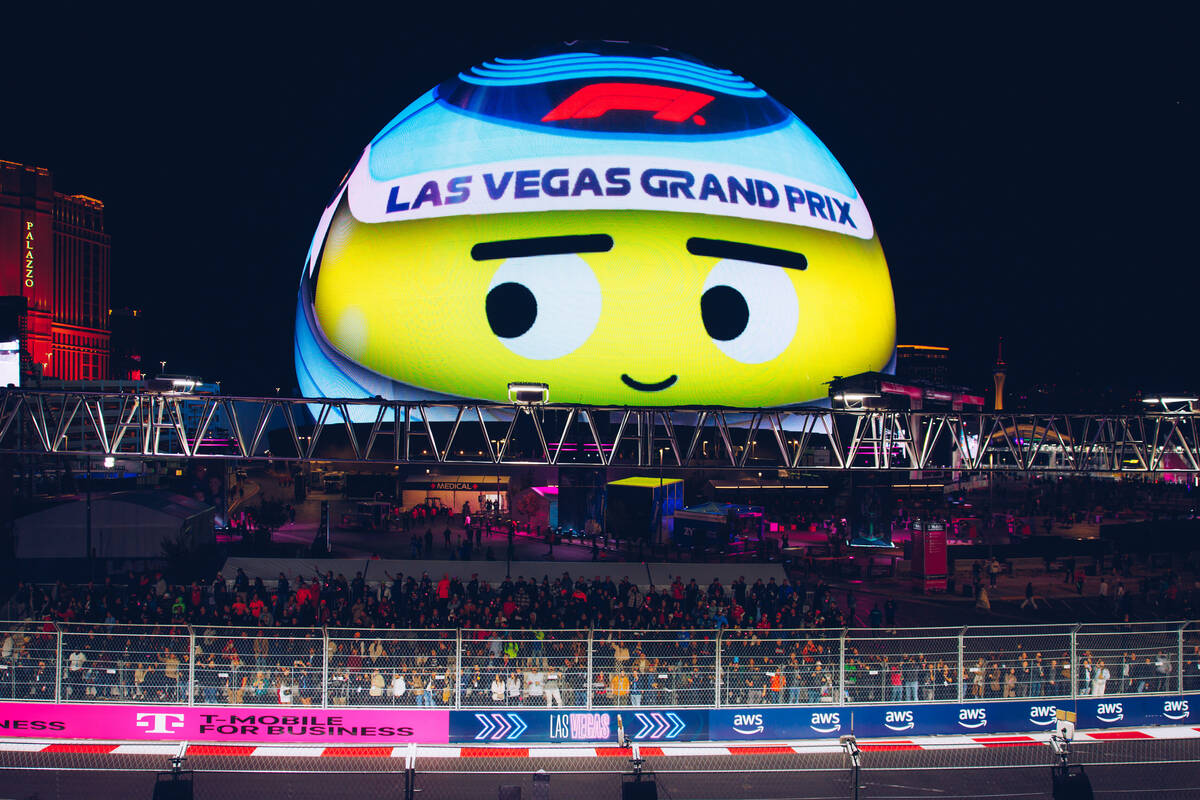
A collaborative process
The videos that play on the Exosphere are referred to internally as “clips,” Barnett says. “But I think that is underserving them. I think we need a better name for them than that.”
These days, almost all of the clips are made in-house by the 40- to 50-member team — including animators, camera operators, graphic designers and the big brains who figure out how to put the various pixels in the right places — at Sphere Studios in Burbank, California.
It’s a collaborative process that starts with workshopping initial ideas to make them better. For the holidays, for example, someone thought of putting an ugly sweater on the Exosphere. Someone else built on that and suggested putting Emoji in an ugly sweater. The final result had Emoji struggling to get that sweater over its big ol’ noggin, then delighting in catching snowflakes on its tongue.
A clip like that, which already has the base Emoji as a starting point, will involve a team of 15 to 20 people, Barnett says, and “we can be up and running within one to two weeks on stuff like that.”
Clips that must be built from the ground up can take the same-sized team between four and six weeks, regardless of their ambition. Ones that may look simple, like the baseball that celebrated the A’s (planned) move to Las Vegas or the NBA Summer League-affiliated basketball, are deceptively hard.
“Those things are actually more complicated in a way, because they’re more static,” Barnett says. “You have nowhere to hide (a mistake) when you’re looking at a basketball, so everything has to be absolutely spot on.”
Giving back to the community
With the sheer volume of clips, you could be forgiven for missing or even not giving the proper amount of attention to some of the truly special ones, such as those commissioned as part of Sphere’s XO/Art program.
“This is the world’s biggest canvas, and so not to hand it over to some of the great visual artists of our time, I think, would be remiss of us,” Barnett says. “We make sure that we’re embracing as wide a community as possible with that program.”
Refik Anadol, whose site-specific works utilize machine learning, kicked off the program Sept. 1 with “Machine Hallucination: The Sphere.” The Turkish-born artist and his team created what he calls “AI Data Sculptures” using millions of raw images of space that were captured by the International Space Station and the Hubble Telescope, as well as more than 300 million publicly available photographs of nature. It even incorporated real time wind and gust speed data.
Sphere rang in 2024 with Andy Gilmore’s kaleidoscopic “Dawn, Noon, Night.” On Martin Luther King Jr. Day, London-based artist David Oku debuted “Vivid Dreams: A Colourful Celebration of MLK’s Legacy.” Shanghai native Shan Jiang contributed “An Inked Flight,” complete with flying dragons and paper lanterns, for Lunar New Year.
Super Bowl week saw a trio of new commissioned works. L.A.-based artist Mister Cartoon’s “For the Love of Money” resembled some of the black-and-gray fine-line tattoos he’s inked on the likes of Eminem and Travis Barker. Eric Haze, the former street artist who designed the logos for Public Enemy and Beastie Boys, tagged Sphere at the end of his piece, “Atmosphere.” And Robert Provenzano, professionally known as CES, brought New York’s “wildstyle” graffiti to the Exosphere with his “Gameplan.”
Since then, Sphere has debuted “Mirror of the Mind,” a meditative, crystal-based installation by Krista Kim, who’s been called one of the most influential people in the Metaverse, as well as “Now Forever,” which resembles a Crayola-infused brain scan, from Italian multi-disciplinary artist Michela Picchi.
As part of the Sphere XO Student Design Challenge, Clark County School District and UNLV students can submit artwork with the goal of seeing it on the Exosphere.
The Exosphere’s art is a passion project for James L. Dolan, the New York billionaire who controls the Knicks, Rangers, Madison Square Garden and Radio City Music Hall, among other holdings, and oversees Sphere Entertainment Co. as its executive chairman and chief executive officer.
“He has a vision where we are giving back to the community, that we are sharing,” Barnett says. “We’re not just bombarding you with advertisements. We are creating spectacle and wonder and allowing people to enjoy it as opposed to being consistently sold to.”
That vision plays into what Barnett says is Sphere’s overall programming philosophy: “We want to entertain you. We want to make sure that you’re intrigued to keep following, to keep playing along with us.”
So far, those followers amount to 1.7 million fans on Instagram alone.
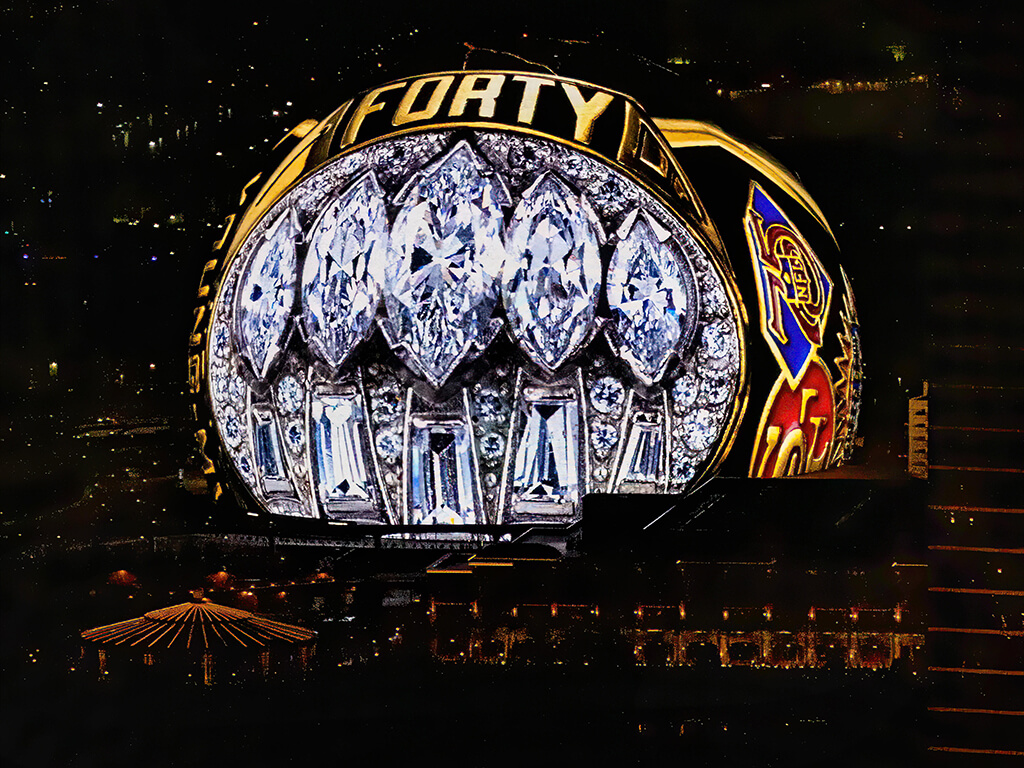 The San Francisco 49ers' ring from Super Bowl XXIX is shown on the Exosphere. (L.E. Baskow/Las Vegas Review-Journal)
The San Francisco 49ers' ring from Super Bowl XXIX is shown on the Exosphere. (L.E. Baskow/Las Vegas Review-Journal) 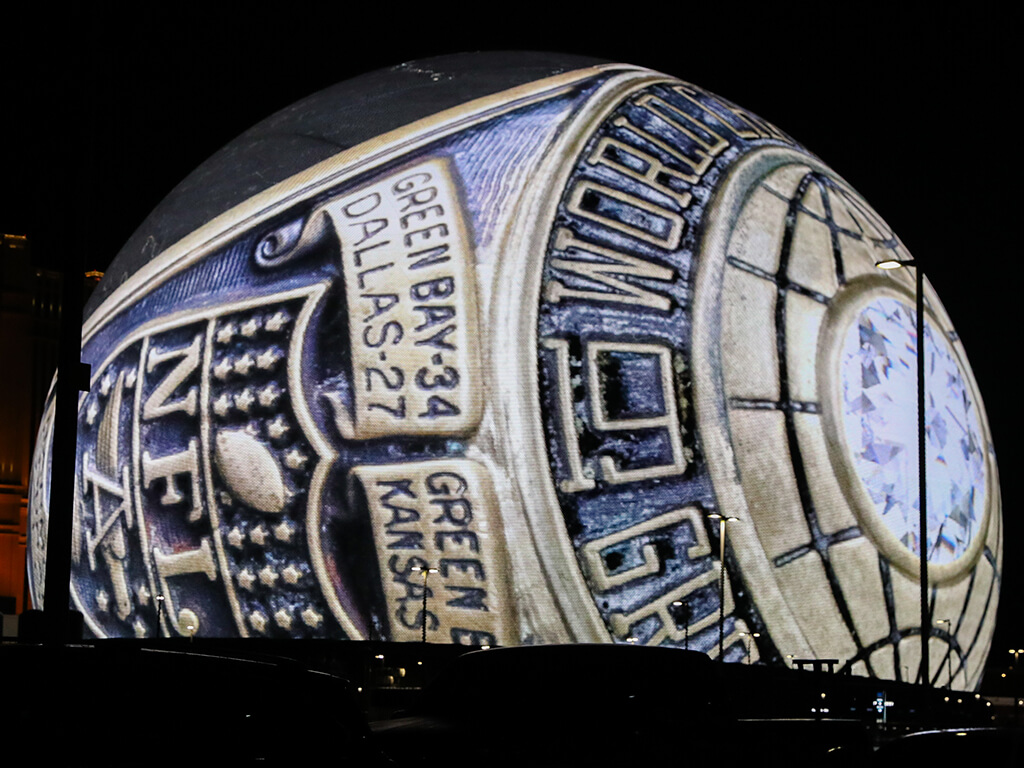 The first Super Bowl ring, awarded to the Green Bay Packers, is shown on the Exosphere. (Daniel Pearson/Las Vegas Review-Journal)
The first Super Bowl ring, awarded to the Green Bay Packers, is shown on the Exosphere. (Daniel Pearson/Las Vegas Review-Journal) What’s next?
Moving forward, look for Sphere to continue to show off during big moments.
In addition to the commissioned pieces, Super Bowl week saw all 57 Super Bowl rings get their moment on the Exosphere. And, in a break from the way it’s normally programmed in advance, much like a TV network complete with advertising breaks, the Exosphere was updated live during the game with every score change. It celebrated Patrick Mahomes’ MVP award as soon as it was announced.
The future also will see more of Emoji, just not as often as you might expect.
“We’re being a little more judicious now about how we use our Emoji friend, so that we can really make those moments very special,” Barnett says.
“There are lots of things that we will be doing and we will continue to do with the Emoji. Because when you’ve got a hit, you want to continue working it. But we never want to outstay our welcome, either.”
Contact Christopher Lawrence at clawrence@reviewjournal.com or 702-380-4567. Follow @life_onthecouch on X.



